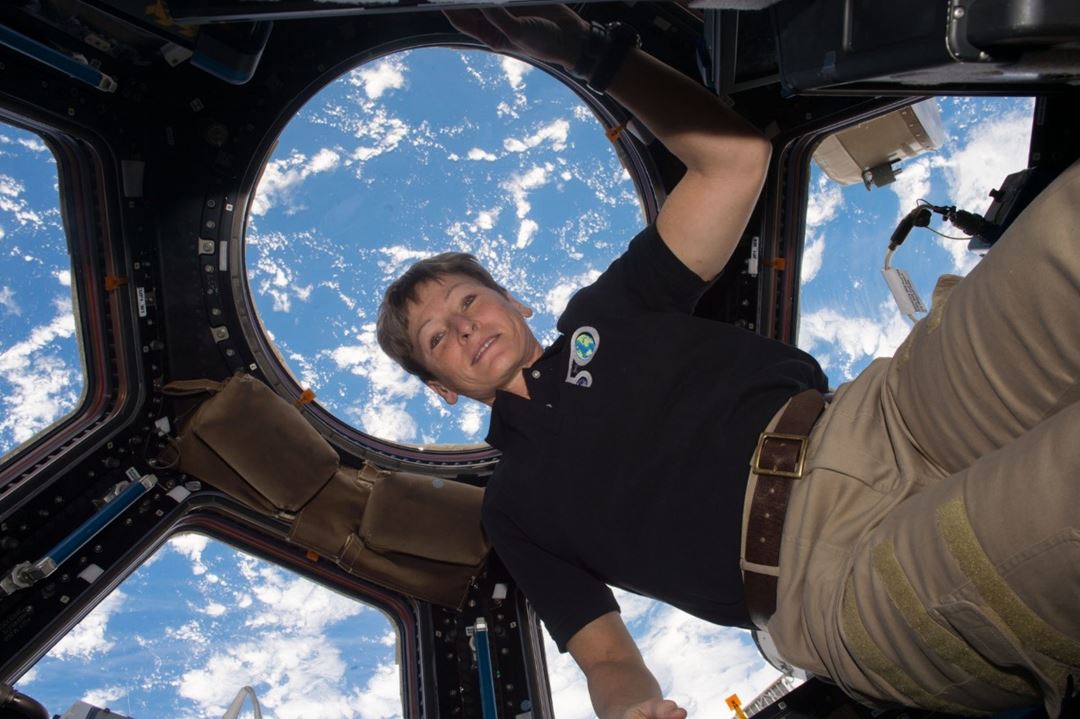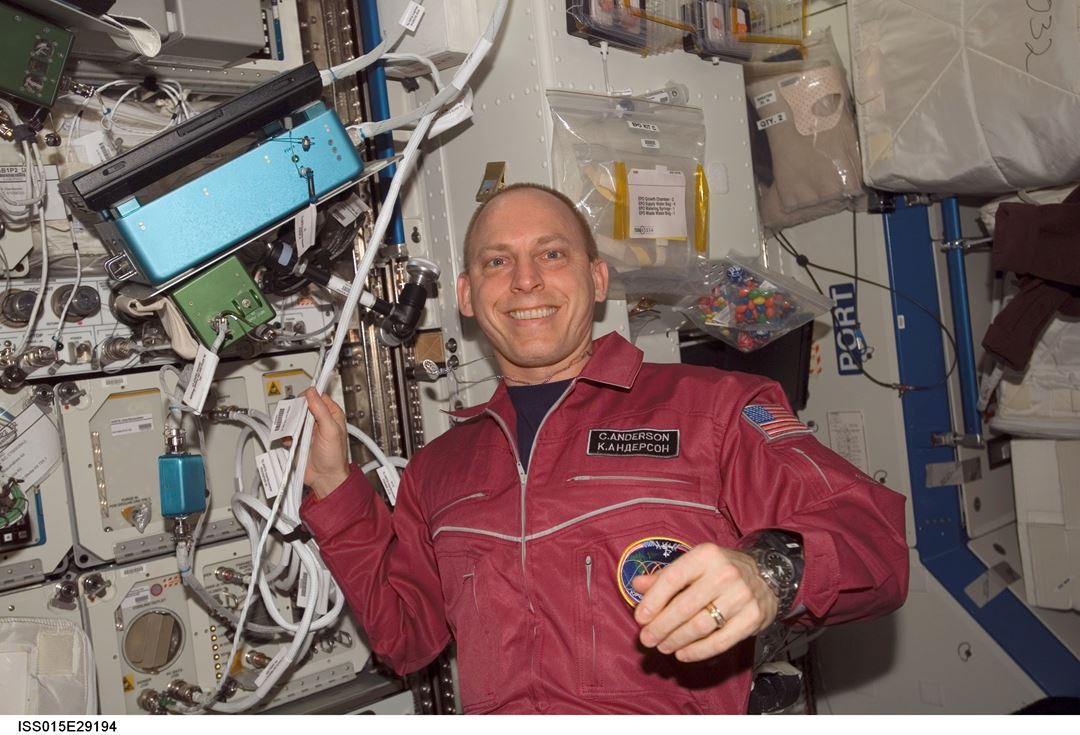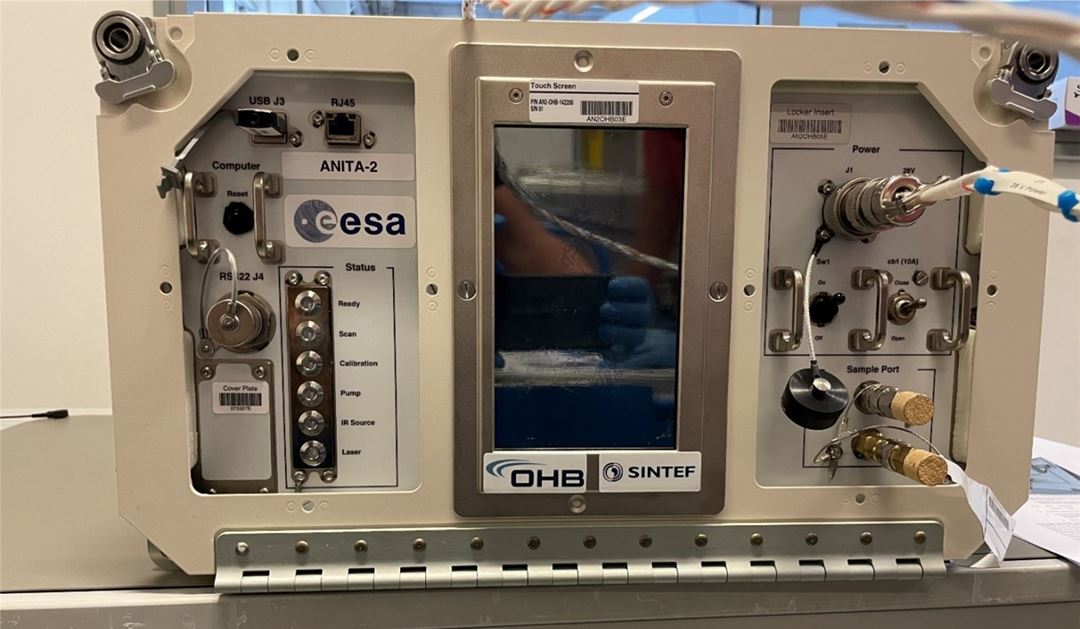In manned space, the control of the air quality is of utmost importance for the health and wellbeing of the crew. Therefore, ESA has a long-term programme for trace gas monitoring, where SINTEF has taken part since its start in 1990 with technology selection.
ANITA (Analysing Interferometer for Ambient Air) is a multicomponent air analyser, capable of measuring more than 40 trace gases simultaneously. Therefore, it is well suited for monitoring the atmosphere of confined environments like spacecraft. The measurements apply FTIR (Fourier Transform Infra-Red) technology and novel calibration and analysis software specially developed by SINTEF. This ensures detailed, continuous, and quasi-real time information on the cabin air quality, with a unique combination of high sensitivity, accuracy, and precision. ANITA has no consumption except for power, and no waste.
For the measurements, no gas pre-processing or pre-treatment is required. The air samples are just taken from the cabin air and are returned unchanged. Most air samples are collected autonomously by ANITA2 through the air inlet in the front panel. For special purposes, samples can be taken manually from selected locations, applying a hand pump and gas bags (confer photos far down on this page).
ANITA1 operated successfully for 11 months onboard the ISS in 2007 and 2008, monitoring 33 gases. The ANITA2 instrument has been built in a contract between ESA, OHB and SINTEF. ANITA2 features a significant reduction in mass, volume, and power consumption, as well as further improved analysis software.
ANITA2 was launched to the ISS in December 2021, pre-calibrated to monitor 37 gases in the cabin air. Like ANITA1, ANITA2 has revealed new information on the detailed composition and the gas dynamics of the ISS air. According to NASA, ANITA2 "is adding greatly to our understanding of the space station atmosphere". ANITA2 has discovered a few new gases, and special on-board events have added other gases. Therefore, the calibration has been extended stepwise by SINTEF from ground – without any astronaut involvement. Since late in 2023, ANITA2 has been monitoring 48 gases in the ISS cabin air.
In June 2024, the status for ANITA2 was formally upgraded from a Technology Demonstrator to be a regular part of CHeCS (Crew Health and Care System), so that the air measurements from ANITA2 can be used for operational decisions.
ANITA2 is also a steppingstone into the future, as a technology demonstrator system for crewed stations, bases, and exploration missions, including the Gateway (planned to orbit the Moon) and to/on the Moon and Mars.
The ANITA technology is applicable to many similar tasks, like in other confined environments (diving operations, submarines), workplace monitoring (laboratories, hospitals, industry), industrial process control, releases to the environment, and environmental monitoring.
The ANITA2 core team:
- European team: System development, installation on the ISS, start-up for autonomous operation, and flight support
- ESA: Customer; also, installation on the ISS, and start-up for autonomous operation
- OHB, Germany: Prime contractor; HW, qualification, system SW, interfaces
- SINTEF, Norway: Calibration, analysis SW, system testing of gas analyses, reporting of analysis results
- NASA: ISS operations and end user of the results
- Information for updating of the gas scenarios (ISS air constituents)
- Transport to the ISS




![The atmosphere of any manned spacecraft needs to be continuously monitored in order to safeguard the crew’s health. A rapid response by the astronauts to the release of harmful gaseous contaminants, accidental off-gassing of materials, or malfunctions of the air revitalisation system is essential. And the need for air monitoring grows with mission duration. The air quality aboard the International Space Station is an increasing concern, and ANITA has contributed to better information and much shorter response time for many contaminants. [Illustration: European Space Agency]](/contentassets/8941386cf7c2499e8e3981e9d5f374b7/columbus.jpg?width=1080&mode=crop&scale=both&quality=80)

